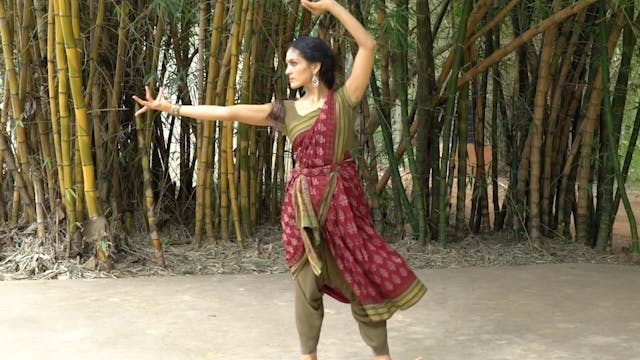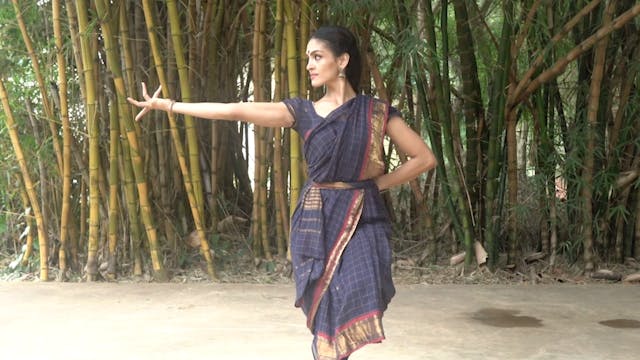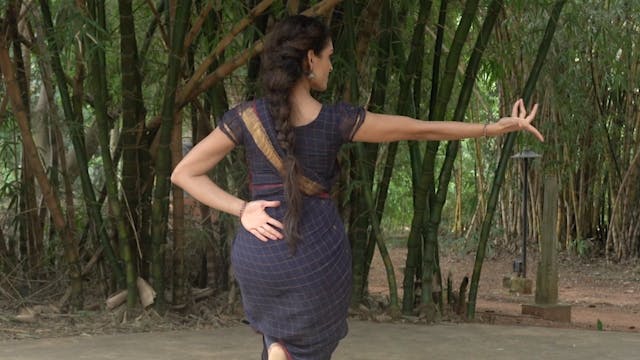'Jaaru', literally means, to slide. This is also called the Sarikal Adavu. In the RK Method, we refer to the standing series that end in Samapada as the Jaar Adavu series and the other sliding Adavus that use Muzhumandi, and Aalidam as Sarikal adavus for simplicity.
This Adavu incorporates the slide in different parts. Sometimes the slide is incorporated as the second leg slides toward the first and other times it is present as the extended foot drags in for the tap with both feet. This is the first variety that we practice in the Raadha Kalpa method, where the leg extends completely to Alidam as the second leg drags in. The variations occur in the incorporation of the slide as well as in the chosen torso movement.
Pointers:
- Be clear with the last tap of the feet. Finish each time, and try not to allow your arms to bounce each time you finish the Adavu on the 4th count.
- Make certain you have practised the various bends with diligence
- Practice the Parshwa bhedas and understand 'Prasaritam' properly
Up Next in Adavus: 2nd Set
-
Bramari Adavu
Bramari literally means to turn. The first Bramari adavu is introduced in the second set of Adavus, the other varieties will be introduced subsequently. It is important to keep the eyes focussed at a particular point and turn the head faster than the body.
Things to keep in mind:
- When stretc... -
Bramari Adavu 2
Bramari literally means to turn. The second Bramari adavu that we practise in the Raadha Kalpa method introduces, quarter, half and full turns.
These turns are used in choreography to change direction with precision.
Things to keep in mind:
- The lengthening of the bent knee and the turn happ... -
Bramari Adavu 3
Bramari literally means to turn. The third Bramari adavu that we practise in the Raadha Kalpa method introduces half turns while using the same technique as the previous Bramari.
These turns are used in choreography to change direction with precision.
Things to keep in mind:
- The lengthening o...


